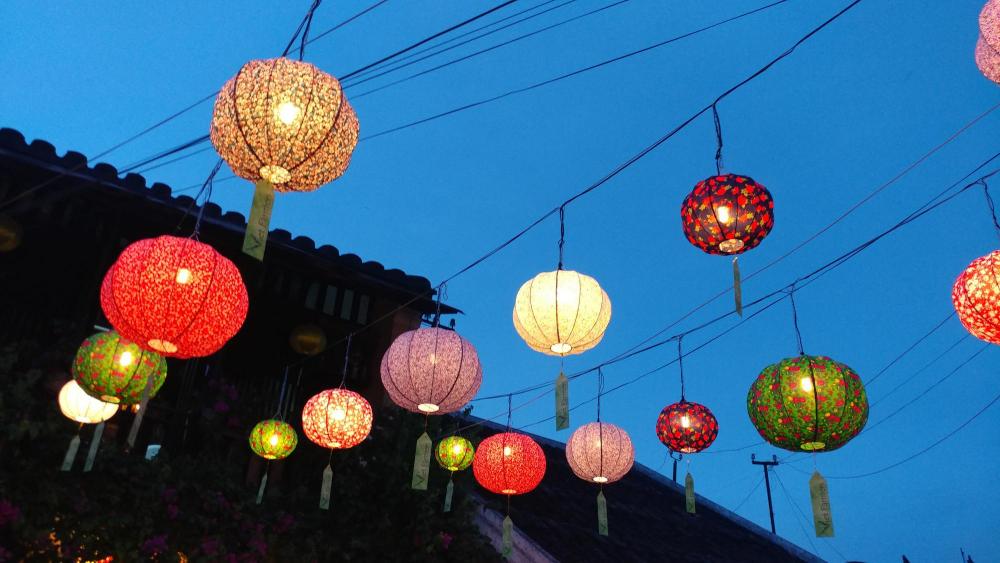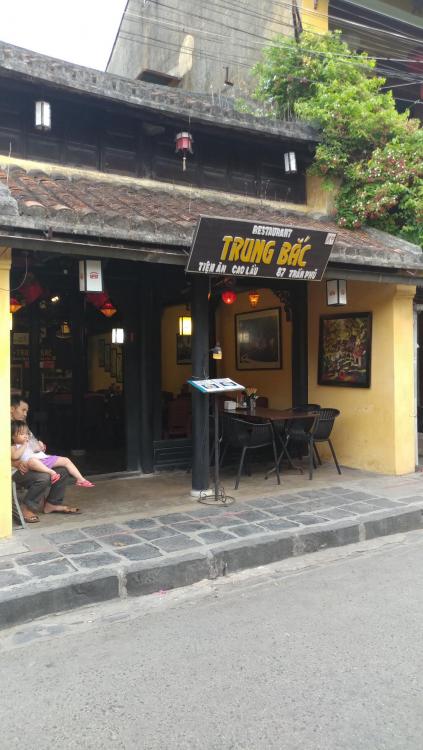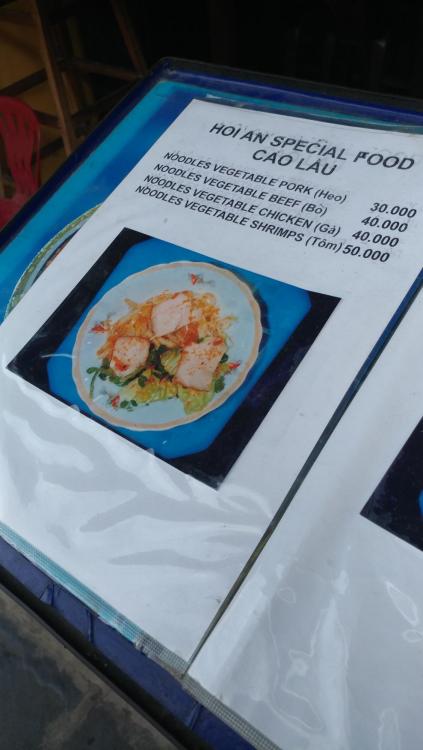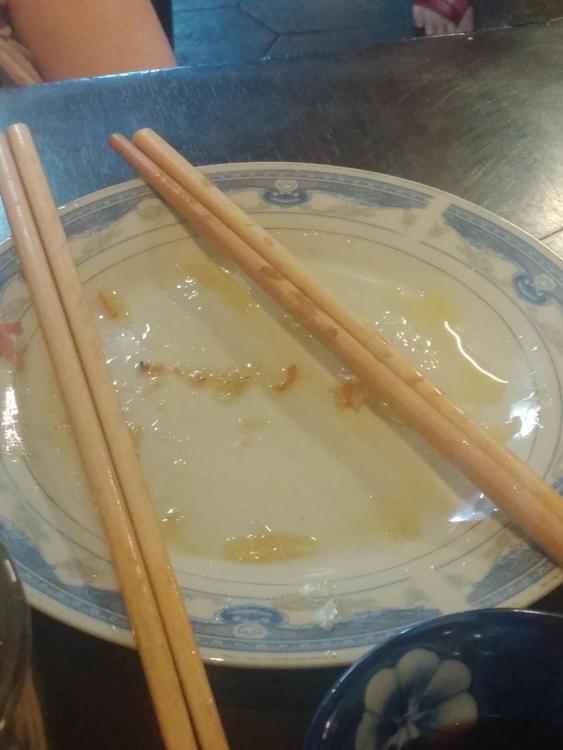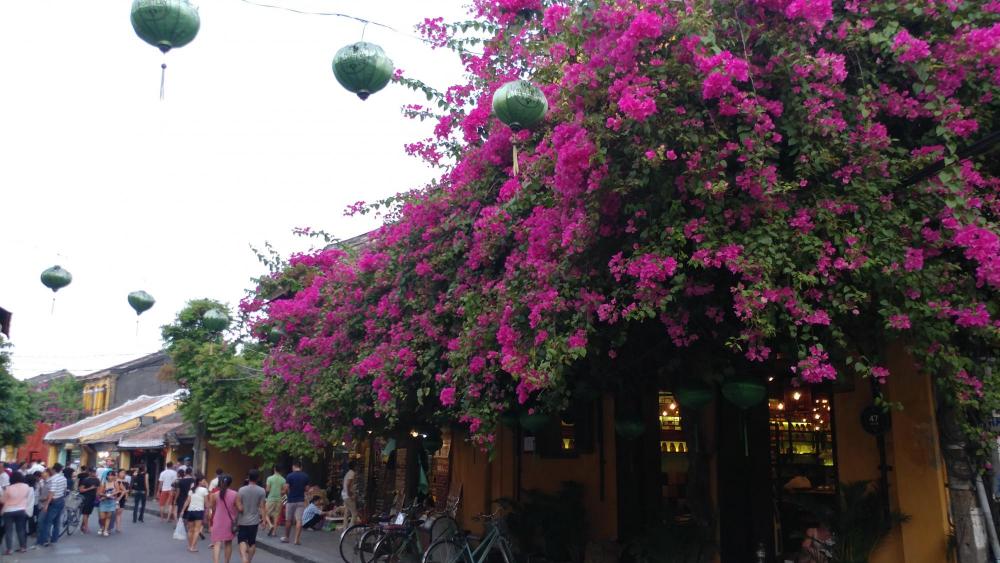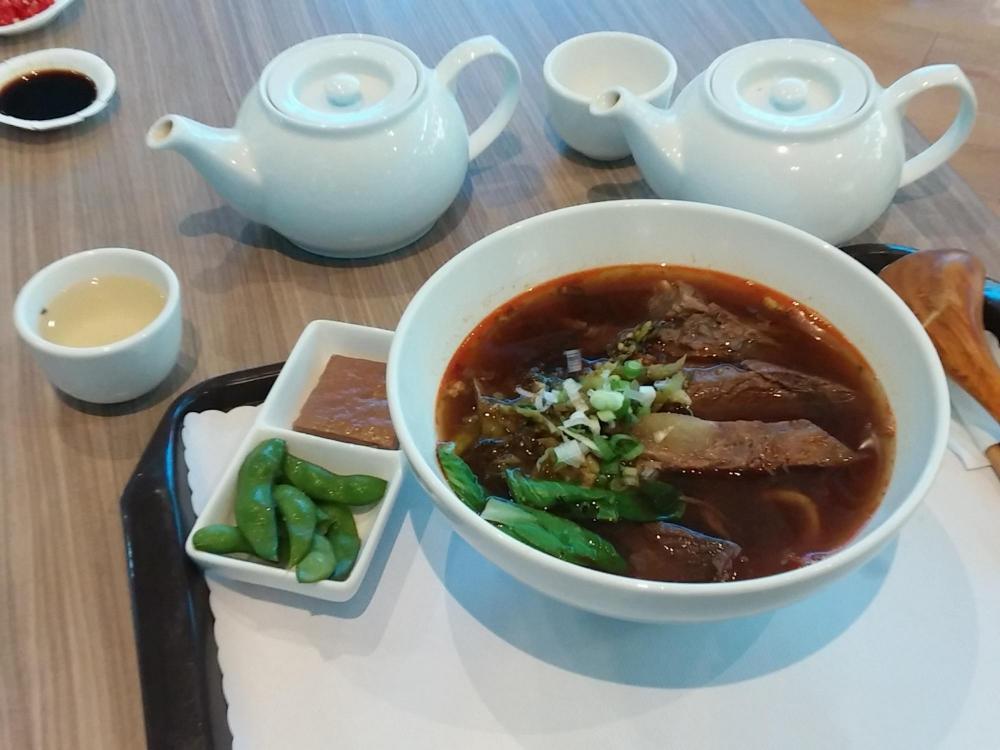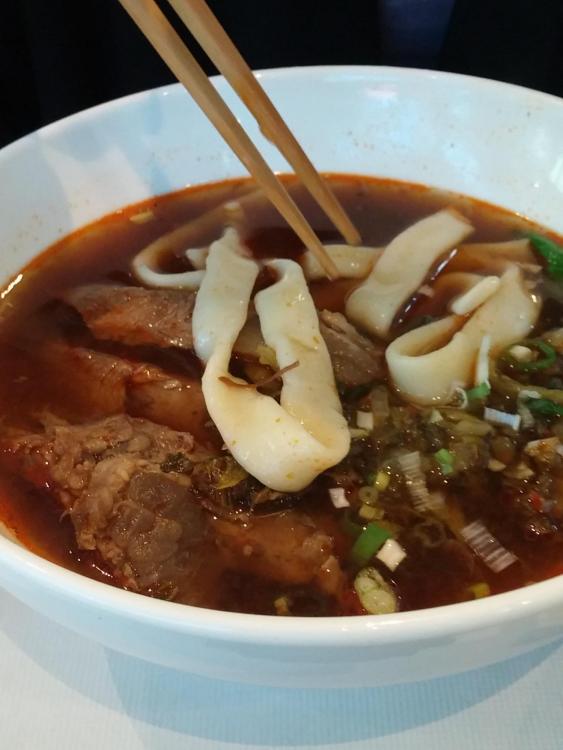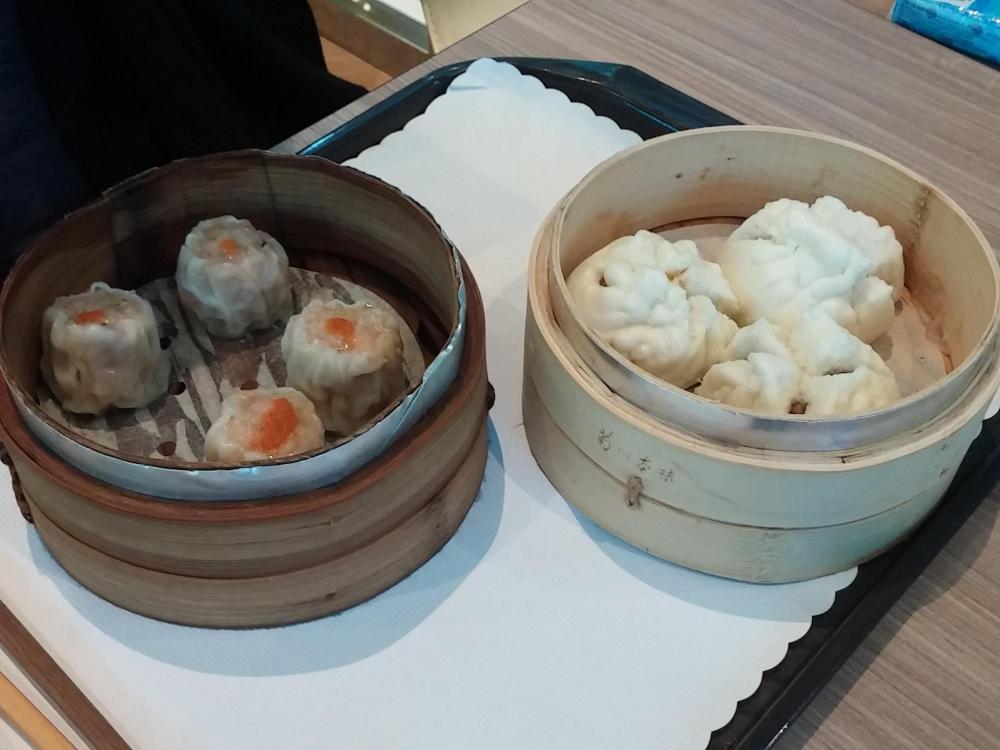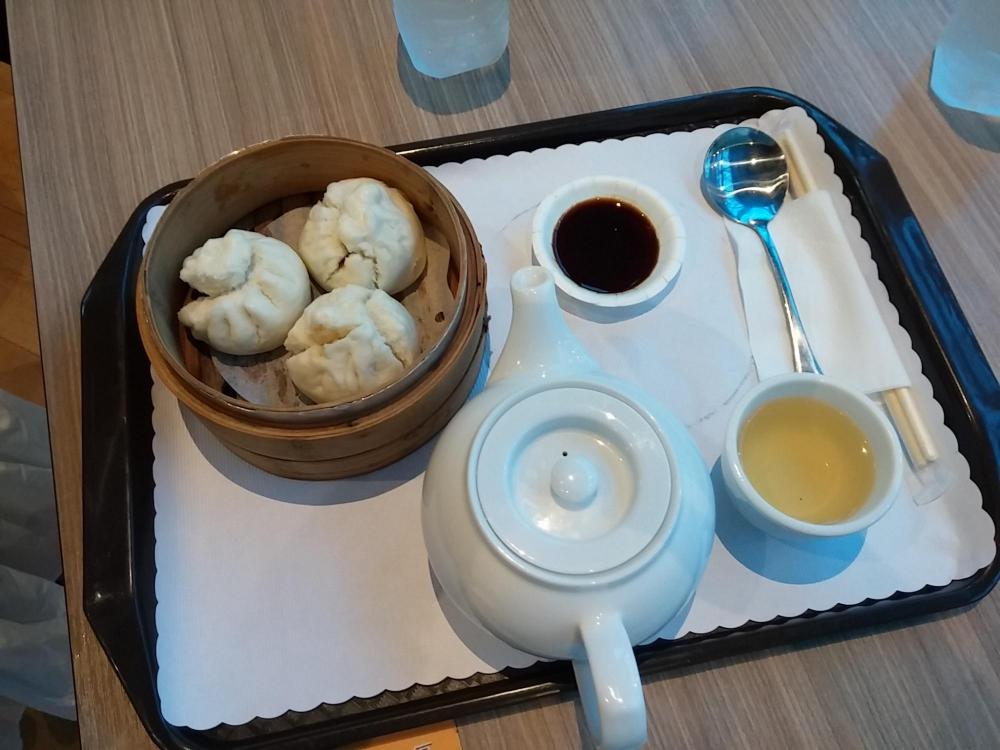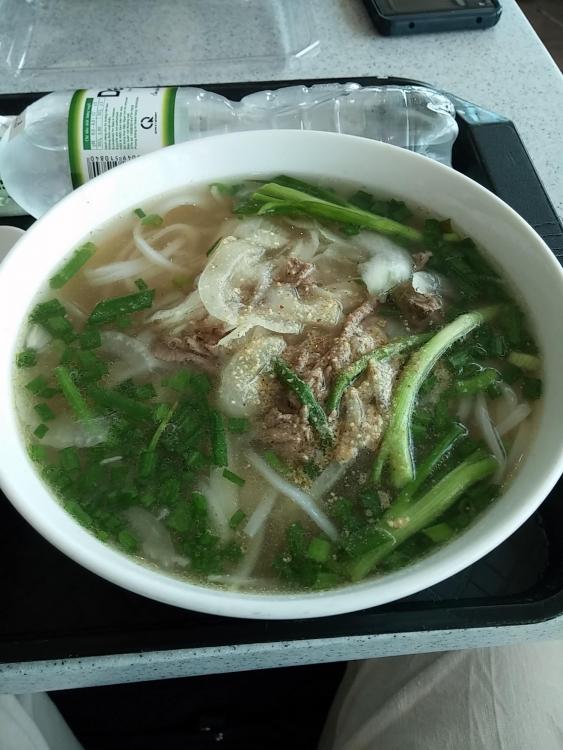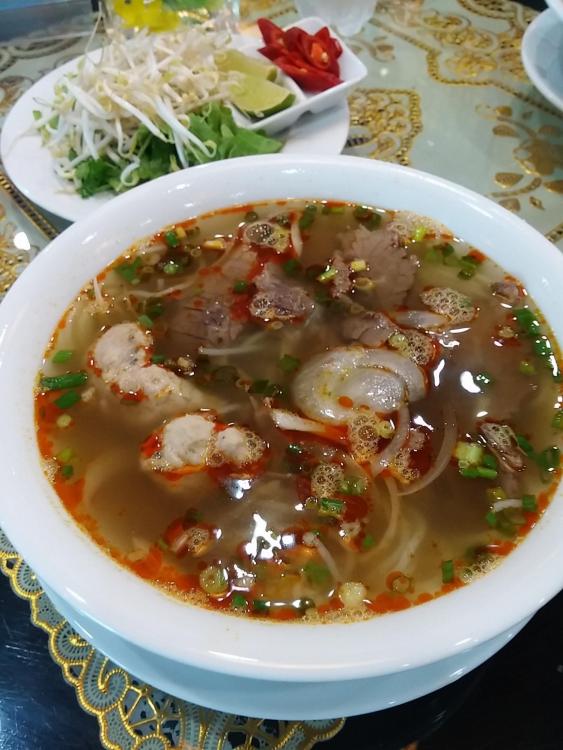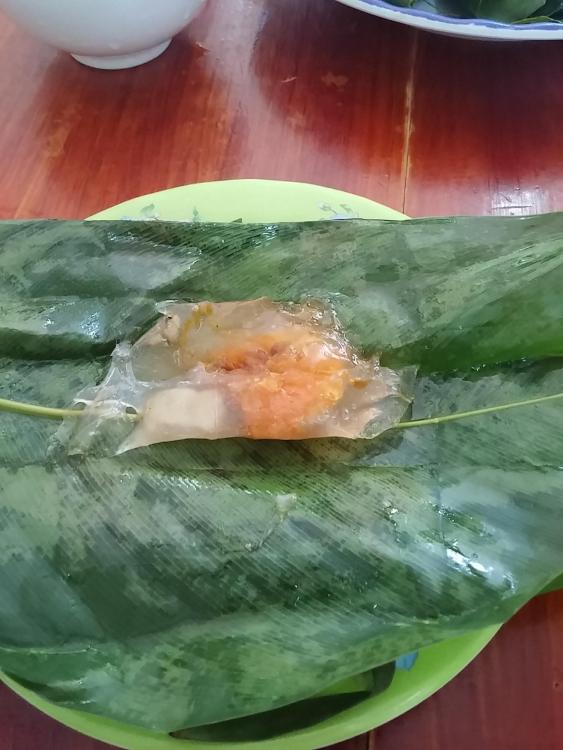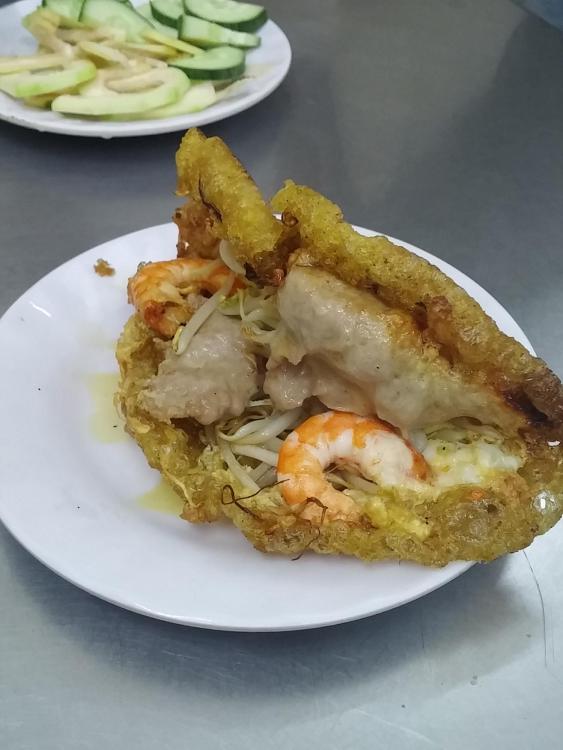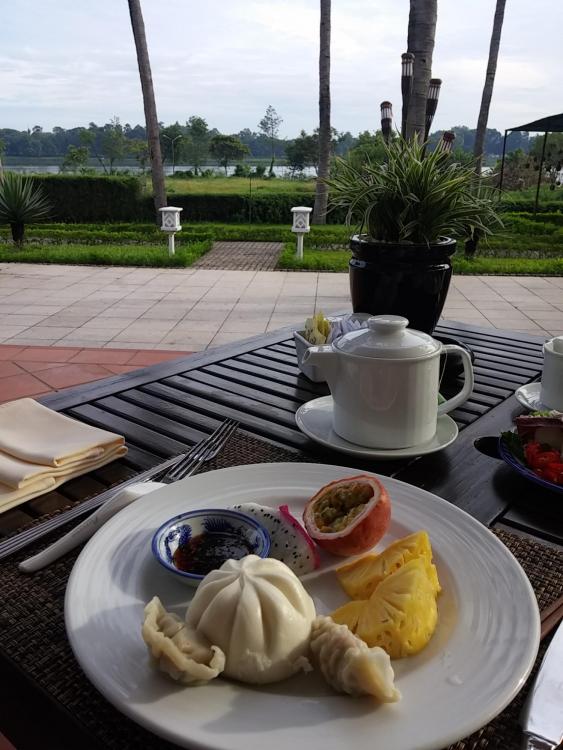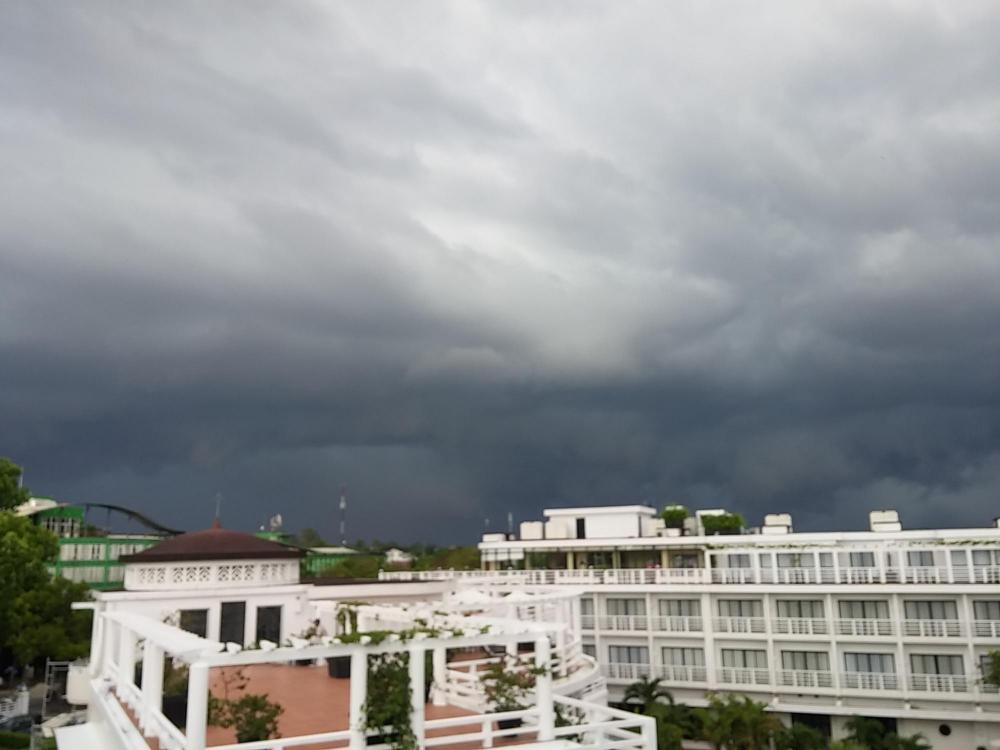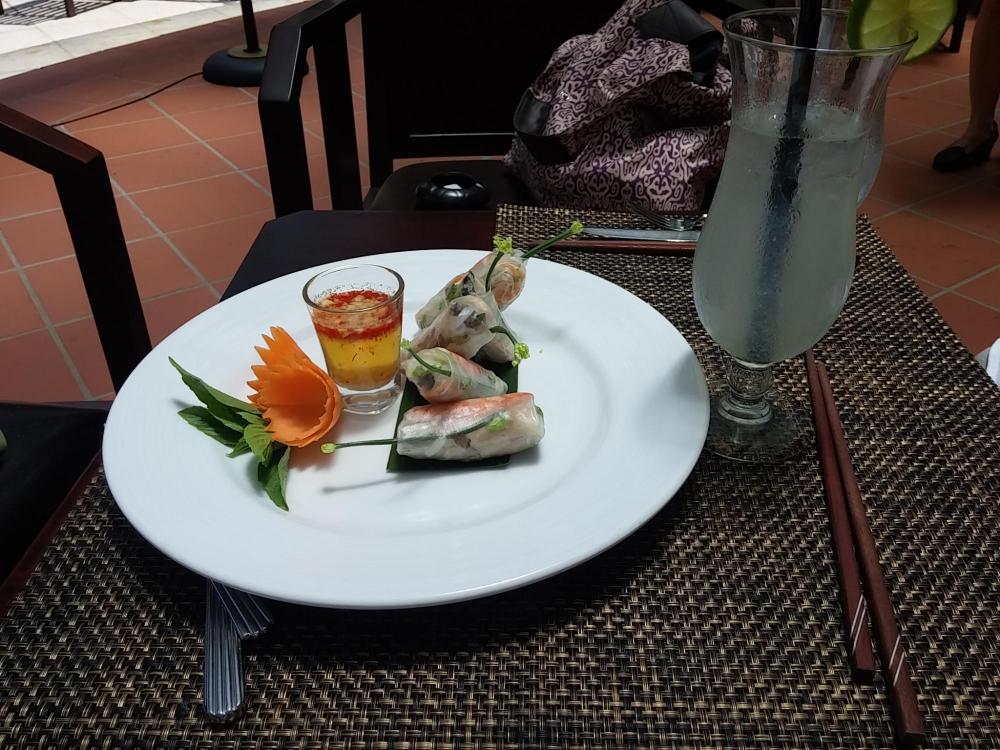
KennethT
participating member-
Posts
6,941 -
Joined
-
Last visited
Content Type
Profiles
Forums
Store
Help Articles
Everything posted by KennethT
-
Week in coastal Central Vietnam foodblog
KennethT replied to a topic in Elsewhere in Asia/Pacific: Dining
Here are some nice pictures of Hoi An from the first evening as we made our way back to the hotel: In the bottom left corner you can see the Thu Bon (too bone) river. -
Week in coastal Central Vietnam foodblog
KennethT replied to a topic in Elsewhere in Asia/Pacific: Dining
PS - please forgive any glaring grammar errors as I am exhausted today - I didn't sleep well last night, and I'm running on fumes now, in addtion to being a bit slammed at work.... bear with me! -
Week in coastal Central Vietnam foodblog
KennethT replied to a topic in Elsewhere in Asia/Pacific: Dining
I neglected to tell a funny story, which also shows the importance of making sure you leave plenty of time with connecting flights. Our connection in Taipei was easy and fast - no problem, but to get from Saigon to Hoi An (actually, the airport is in Danang, which is the 3rd largest city in Vietnam and about 20 minutes drive from Hoi An), we needed to change airlines since EVA doesn't fly there. So, we'd have to go through immigration, collect our luggage at baggage claim, go through customs, then transfer to the domestic terminal and check-in at the new airline and go through security again. A few months before we left, Vietnam introduced a new EVisa - so we didn't have to pay like $120 each and bring our passports to the consulate, but rather, you could do it online, and only pay $25 per visa... a few days later, they emailed you a link to download and print the visa to show at immigration. That's great. In the past, another option was to go through a Viet company online that would get you a Visa on Arrival - which is basically a letter approving you, but not the true visa, which you then stand on line (or mob scene) to get when you get to the airport before you head to the immigration line (mob scene). It's usually cheaper than the consulate Visa, but you have to stand on 2 lines when entering, not one... and nowadays, it's useless because the EVisa is even cheaper, and more convenient. When you get to immigration in Saigon, there aren't really lines, per se, for each window - more like a giant mob scene. And as typical in Vietnam, a lot of old Vietnamese ladies are trying to sort of shove their way through the line. We experienced something like this many years ago in Hanoi on line to see Ho Chi Minh's mausoleum... it's actually pretty funny.... but it means that it took quite a while to get through immigration, even though they had like 20 windows open. Once through immigration, it's on to baggage claim. I've found that most places in Asia that we've been to have more efficient baggage claims than in NY. In some places, our bags are waiting for us by the time we get there! Not so that day... even though it took maybe 20-30 minutes to get through the immigration line, the baggage claim had just started unloading our flight from Taiwan... but what was hilarious was that most of the items on the belt weren't luggage, but boxes of freight! It was maybe 10:1 freight to luggage, if it was even that good of a ratio... I made the joke at one point wondering when FedEX started taking passengers! Evidently, there are quite a few Vietnamese people living in Saigon who want things from either NY or Taiwan. There was tons of appliances and other stuff packed in big Home Depot boxes, and other people had shipped big coolers full of seafood or something! Some people had shipped 10 boxes each! So, the mob scene around the baggage belt was complete pandemonium of people taking box after box after box of freight. It probably took over an hour for us to finally get our bags! So, finally, we got our bags, went through customs with no problems and headed into the arrivals area of the Int'l terminal. The first thing I do is look for an ATM to get some local currency (I became a millionaire by taking out VND 3,000,000 (or about $130)... haha.... Then, it was off to get a SIM card for my phone to make sure I had data and a few minutes of talk time. There are 3 main mobile companies, and they all have tourist SIMs - we went with Viettel (the largest netowrk in VN) and got a SIM which gave us 1 month of unlimited 4G data and 30 minutes of talk time - all for about US$13. So, now that our errands are done, we need to find the domestic terminal. Luckily, I had looked at the layout of the airport online at home so I knew roughly where we had to go, and I'm glad I did, because it took a while to find any signs pointing the right way through all the people trying to grab you to take their taxi. To get to the domestic terminal, you have to exit the int'l terminal building - and upon doing so, you are hit immediately with the unmistakable smell of durian! It's then about a 5-10 min. walk outside (under a canopy in case it rained) to get to the domestic terminal. Once there, checking in was a breeze, as was the security to get to the gate. -
Week in coastal Central Vietnam foodblog
KennethT replied to a topic in Elsewhere in Asia/Pacific: Dining
Not really - we had them in a couple of places but I didn't really detect a difference - supposedly, the main difference is not in flavor but texture - but even then, while I thought they had a unique texture, I thought it could have been because of technique, not necessarily the water. Plus, many of hte noodles we had have unique textures which are not necessarily attributed to magical well water. -
Week in coastal Central Vietnam foodblog
KennethT replied to a topic in Elsewhere in Asia/Pacific: Dining
Also note that, unlike in Saigon, which had tons of herbs served with EVERYTHING, they don't use many herbs in Central Vietnam by comparison. Many things, like the Cha Gio, which in Saigon would be served with a plate of herbs and lettuce for wrapping, is served naked, so to speak. -
Week in coastal Central Vietnam foodblog
KennethT replied to a topic in Elsewhere in Asia/Pacific: Dining
Keep in mind when viewing prices that there is currently about 22,700 VND per US dollar.... so food in local restaurants (and even some tourist restaurants) is extremely cheap. -
Week in coastal Central Vietnam foodblog
KennethT replied to a topic in Elsewhere in Asia/Pacific: Dining
For dinner the first evening, I wanted to try a place that specialized in Cao Lau (cow low (like owww)) - which is a noodle dish that is only made in Hoi An. Supposedly, the noodles are made with special well water that is only available in Hoi An, and from the Ba Le well. I never took a picture of the Ba Le well, but it really is unremarkable - you would pass it by not even knowing it was there if you didn't see people with buckets going to and from the well, and then delivering the water to local restaurants. The first night, I didn't want to go too far to find a place to eat, and had a recommendation of this place, that, according to Google maps, was quite close to our hotel. This was the first time of several where Google maps didn't quite know where certain addresses were - so we had to walk a few more blocks to get to the address - still not far, but not where it was "supposed" to be. We had a recommendation to go this place: Trung Bac (Chum Bahk) 1 page of the menu. Cao lau... what you can't tell from the picture is how dense the pork cracklins were... not so great. Hoi An style spring rolls Cha Gio (sha yo) - these were extremely greasy!!!! Showing the remaining grease!!! So, all in all, not a great recommendation - and it left me a little down that night - but I hoped that this would not be a trend, so we went to bed, exhausted, ready to start a new day. -
Week in coastal Central Vietnam foodblog
KennethT replied to a topic in Elsewhere in Asia/Pacific: Dining
The old city of Hoi An is a UNESCO world heritage site - which means A) it is very unique and beautiful and B) it is extremely crowded with tourists - seemingly mostly Vietnamese tourists. As in the past, my wife and I found ourselves to be as much a tourist attraction as the sites, as several families wanted their picture taken with us. I wish I had the presence of mind to have them take our picture with one of our cameras also. Here are some scenes taken from our first evening, after unpacking, just walking around before getting something to eat, then going to bed! I don't know if you can tell how exhausted I am! Many hotels will lend bicycles to cruise around on... or there are shops that will rent them as well. The greenery and flowers are incredible. As a tourist, you are supposed to purchase a ticket for the old town (about $5) which includes admission for 5 tourist sites. The money from the tickets are distributed to the businesses in the old town for maintenance and upkeep of the old buildings and the flowers/greenery/lanterns. -
Week in coastal Central Vietnam foodblog
KennethT replied to a topic in Elsewhere in Asia/Pacific: Dining
OK, now that you've seen the previews, it's time to start the show. My hard drive is not fully operational yet - it should be tonight, by the time I'm ready to go to bed, so I can't download photos from my main sightseeing camera yet, but I was able to download all of my wife's photos and my cell phone photos onto a USB stick and bring it into work so I can get started. Planning this trip was a little more difficult than planning for Saigon a year and a half ago. While there are a few decent guidebooks that point out the sights, and some tourist restaurants, there are very few blogs or information from people actually living there helping to point the way to really good local food. We got a good amount of help from one of my wife's Facebook friends who is a guide in Hanoi - but he had some information on Hoi An (hoy ahn) and Hue (hway) that wound up to be pretty good. As usual, we connected through Taipei, flying on EVA Air... a very pleasant flight, and I was surprised to be able to get a decent 7-8 hours of sleep!!! Even still, it's a really long day as I worked a full day, starting at around 7AM going to board our flight at 1:30AM! Then after the 14.5 hour long flight (of which I slept 7-8 hours), we had about a 2 hour layover in Taiwan before a 3 hour flight to Saigon... then a long layover - maybe about 4 hours (which was totally necessary as you'll see below) and finally a 1 hour flight to Danang. I think we wound up getting to our hotel around 3:30 or 4PM the day after we left! But you gain a lot of the time back on the way home as there is a 13 hour time difference between Vietnam and NY right now. So, as I griped about before, the Taipei airport has gotten rid of the free, beachy lounge (see the Saigon post for photos of it) so there isn't much space to wait around while waiting for the food court to open. The first flight landed around 4:30AM, and so we wound up getting to the terminal around 5... having an hour to kill while waiting for the restaurant to open at 6. When it finally did, we got: Waiting for the restaurant to open Taiwanese beef noodle soup and loose leaf oolong tea. As you can see, the noodles are quite thick and have very good texture. The pieces of beef are huge, and really really tender. The broth is beefy, scented with what seems to be star anise. It was a bit underseasoned, so I added some chopped chili, soy sauce, and black vinegar which really perked it up and made it fantastic. I love it. Pork and shrimp sui mai with crab roe (left), and char siu bao (right). As before, the filling of the char siu bao is rather smoky and quite savory, as opposed to the standard HK style which is sweet. -
I do a faux Caesar dressing all the time but I just use lemon juice, olive oil, fish sauce, finely minced garlic, salt and pepper. Finely grated parmigiano goes on the lettuce just before the dressing... Love it.
-
Week in coastal Central Vietnam foodblog
KennethT replied to a topic in Elsewhere in Asia/Pacific: Dining
Arrrggghhhhh. It is taking forever to clone my old hard drive over to my new hard drive... which I need to do before I can copy/collate all the photos from 3 sources (my main camera I use for sightseeing, my cell and my wife's cell). It has been going all day, and will probably be going on by the time I go to bed tonight, so unfortunately, I don't see any way I'll be able to put anything up tonight... fingers crossed for tomorrow! Sorry folks! -
Week in coastal Central Vietnam foodblog
KennethT replied to a topic in Elsewhere in Asia/Pacific: Dining
So, we're home and have slept a full night's sleep, but I feel like I am in that inbetween sleep and awake state. I barely slept on the flights coming here, so by the time we landed in NY, around 10PM NY time, we had been up for a really long time (about 30+ hours). What with our extremely efficient JFK airport, ahem, we got home around 12:15AM, even with Global Entry, which greatly reduced our time going through immigration and customs. Unfortunately, I won't be able to start posting until this afternoon at the latest, since the hard drive on my computer crashed just before we left, so I have to spend a few hours today installing its replacement, then loading all the photos and collating them. -
Week in coastal Central Vietnam foodblog
KennethT replied to a topic in Elsewhere in Asia/Pacific: Dining
-
Week in coastal Central Vietnam foodblog
KennethT replied to a topic in Elsewhere in Asia/Pacific: Dining
Now in the Taiwan airport, but not that hungry since I have now eaten 3 times today already, and will be fed on the next plane soon... But I had to get a snack... -
Week in coastal Central Vietnam foodblog
KennethT replied to a topic in Elsewhere in Asia/Pacific: Dining
Now in the Saigon airport waiting for our flight to Taiwan. And, since we haven't eaten in about 2 hours... When in Saigon, it's time for Pho! Interestingly, the prices were about double here compared to the airport in Hue. Pho was $5! -
Week in coastal Central Vietnam foodblog
KennethT replied to a topic in Elsewhere in Asia/Pacific: Dining
Waiting for the plane to load luggage... Airport bun bo hue - cost for 2 plus 2 bottles water, about $6 which is roughly double the street price. -
I had always heard that to make gribenes, one fried chicken skin with onions in schmaltz. Without the onions, it's just chicken skin.
-
Week in coastal Central Vietnam foodblog
KennethT replied to a topic in Elsewhere in Asia/Pacific: Dining
So this will probably be the last teaser before the real show starts on Sunday or Monday, jetlag dependent, as we leave for home early tomorrow morning. Dong Ba market - sorry for the exposure issues- I think my wife got better shots I'll be able to add later... Banh bot loc - a whole shrimp (head and shell included) and some pork encased in tapioca starch, wrapped in a banana leaf and steamed. I'll be back as soon as I can! -
Week in coastal Central Vietnam foodblog
KennethT replied to a topic in Elsewhere in Asia/Pacific: Dining
The clouds parted, and the heavens shone down on: Banh Khoai!!!!!! I wish you could taste how crunchy and crispy it was... -
Week in coastal Central Vietnam foodblog
KennethT replied to a topic in Elsewhere in Asia/Pacific: Dining
-
Week in coastal Central Vietnam foodblog
KennethT replied to a topic in Elsewhere in Asia/Pacific: Dining
I couldn't get a good photo, but soon after I took that last photo, it started POURING with tons of lightning. It was quite a spectacle, especially being able to observe it from the comfort and safety of our hotel room, enjoying another awesome mango and some tea with our tea set. The rain stopped just before we went out for dinner... This rainbow didn't lead to a pot of gold, but something even better.... this dish of mam tom chua! This is a great story, but definitely too long to struggle with this pima cell phone.. -
Week in coastal Central Vietnam foodblog
KennethT replied to a topic in Elsewhere in Asia/Pacific: Dining
-
YES!!!! So glad to see you are going home, most importantly because you are healthy enough to do so, but also so you can finally get something decent to eat...
-
Week in coastal Central Vietnam foodblog
KennethT replied to a topic in Elsewhere in Asia/Pacific: Dining
-
Week in coastal Central Vietnam foodblog
KennethT replied to a topic in Elsewhere in Asia/Pacific: Dining


